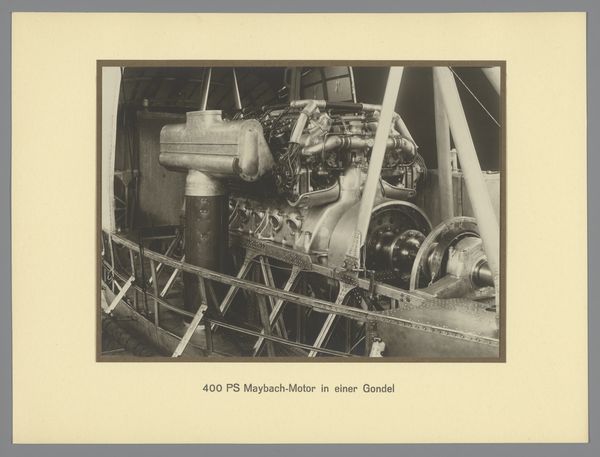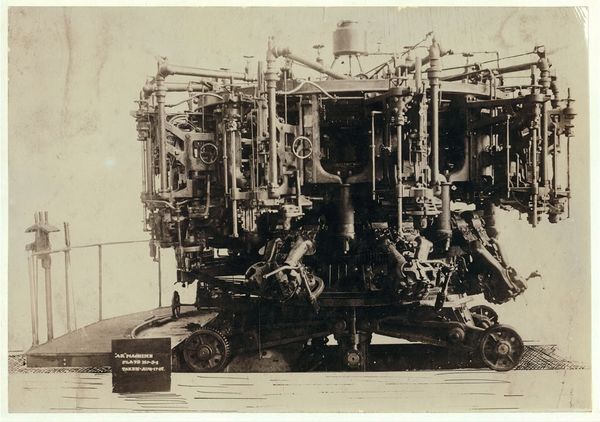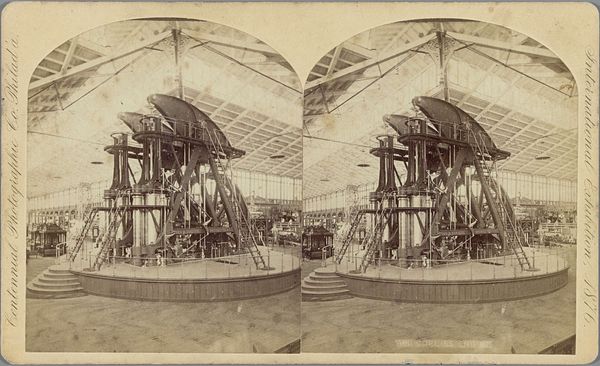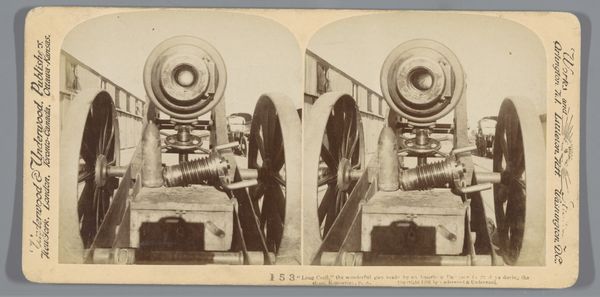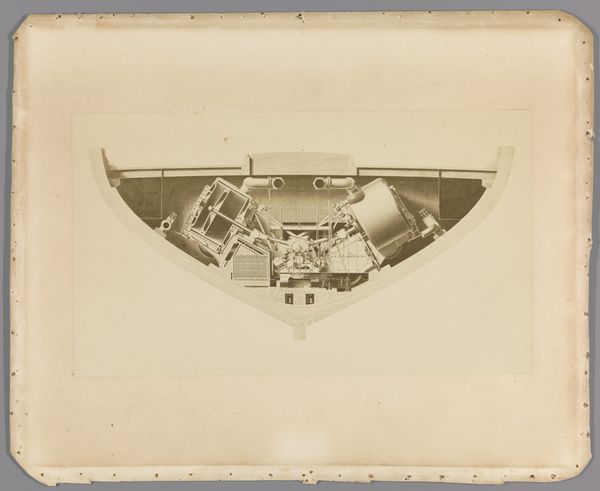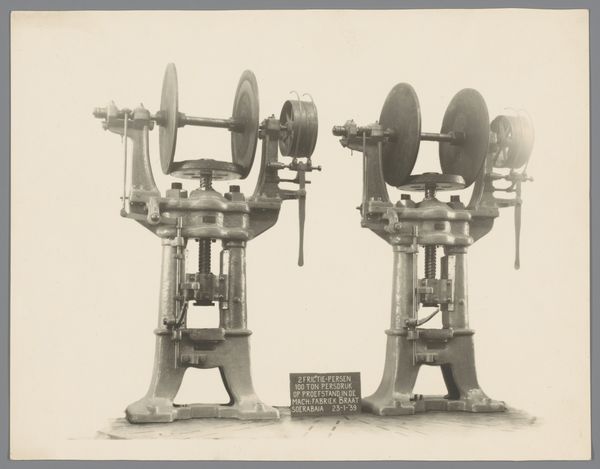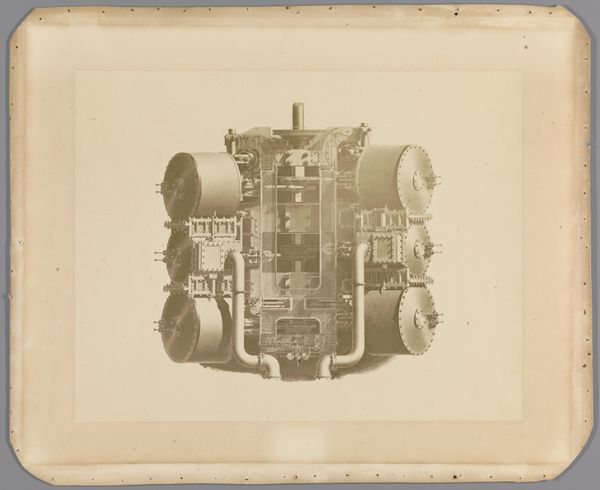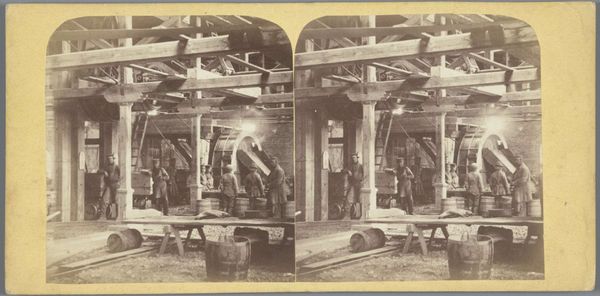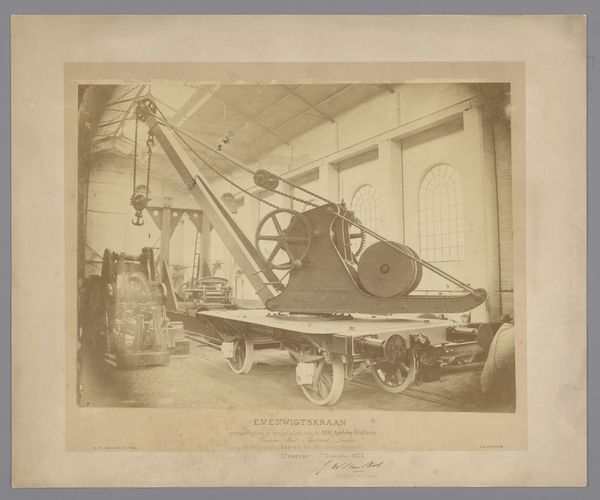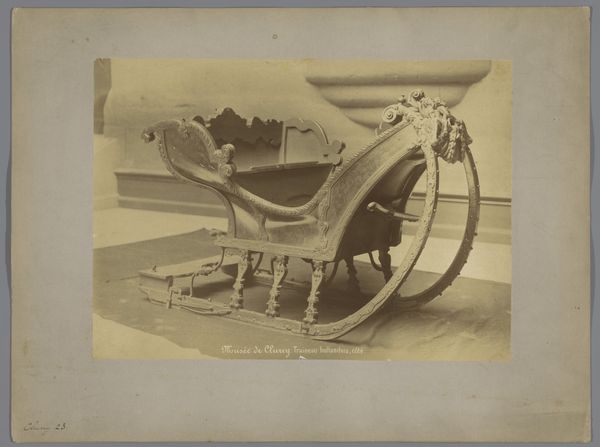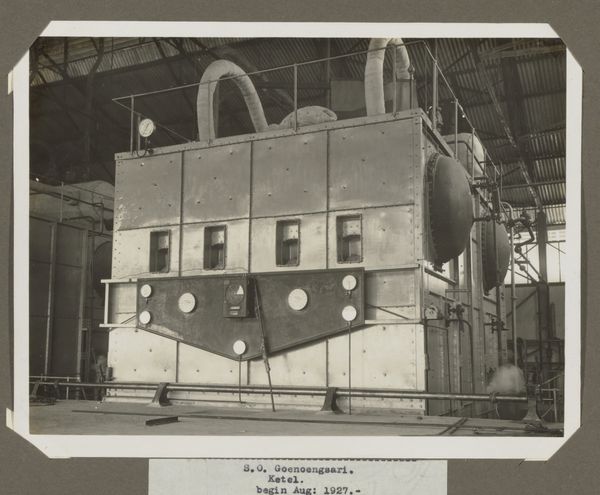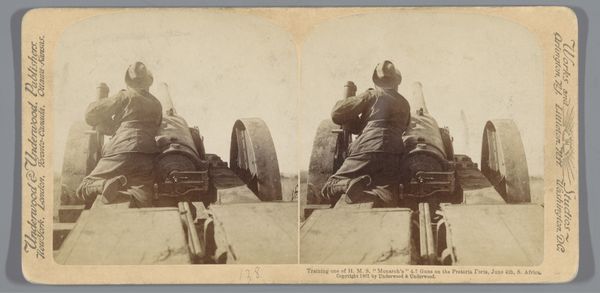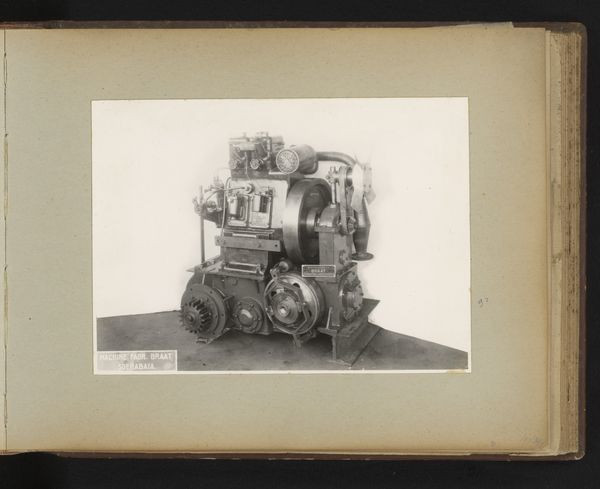
The Wonderful Universe Explorer, The Great 36-inch Equatorial Telescope, Lick Observatory, Mt. Hamilton, California 1902
0:00
0:00
photography, gelatin-silver-print
#
landscape
#
photography
#
geometric
#
gelatin-silver-print
Dimensions: 3 7/16 × 7 in. (8.8 × 17.8 cm)
Copyright: Public Domain
Curator: This stereo photograph, titled "The Wonderful Universe Explorer, The Great 36-inch Equatorial Telescope, Lick Observatory, Mt. Hamilton, California" by Underwood & Underwood, was taken around 1902. It's a gelatin-silver print, part of their popular series of stereoscopic views. Editor: The scale is almost overwhelming; look at that massive apparatus! The gears, the lenses—it’s a temple of engineering. And the sepia tones lend it such a striking, archaic feel. Curator: Absolutely. Stereographs were incredibly popular forms of mass media at the turn of the century. Think of them as an early form of virtual reality, bringing distant places and impressive achievements like this telescope into people’s homes. Underwood & Underwood were masters of this, shaping public understanding of progress and exploration. Editor: It makes you wonder about the labor that went into producing not just the telescope but the photographs themselves. From mining the silver for the print to building the machinery needed to grind those enormous lenses, it’s a network of human effort almost invisible in the final image. Curator: Precisely. The Lick Observatory itself was a product of industrial wealth, funded by the estate of James Lick, a real estate and investment mogul. So this image not only represents scientific advancement but also the powerful relationship between capital and the pursuit of knowledge. The photograph subtly reinforces the institution of science as this sort of great endeavor. Editor: Right, it transforms technological ambition into something consumable, easily circulated as an item in their catalogue. It makes me consider the public consumption of progress, neatly packaged. I am curious about the people in the image, perhaps just out of frame; who were they? What was their job in relation to this "Wonderful Universe Explorer?" Curator: A good question. And of course, that perspective informs how we see it now, over a century later. Editor: It leaves me pondering how such ambitious machinery shapes our understanding of human possibilities. Curator: Yes, and about how carefully curated images can become part of a larger system to shape culture and ideals.
Comments
No comments
Be the first to comment and join the conversation on the ultimate creative platform.
